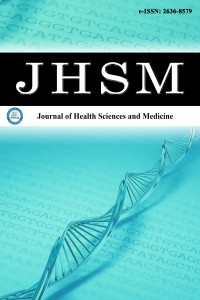1.
Lundberg M, Grimby-Ekman A, Verbunt J, Simmonds MJ. Pain-related fear: a critical review of the related measures. Pain ResTreat. 2011;2011:1-26. doi:10.1155/2011/494196
2.
Kori SH. Kinesiophobia: a new view of chronic pain behavior.Pain Manage. 1990;3:35-43.
3.
Vlaeyen JW, Kole-Snijders AM, Rotteveel AM, Ruesink R, HeutsPH. The role of fear of movement/(re)injury in pain disability. JOccup Rehabil. 1995;5(4):235-252. doi: 10.1007/BF02109988
4.
Bordeleau M, Vincenot M, Lefevre S, et al. Treatments forkinesiophobia in people with chronic pain: a scoping review. FrontBehav Neurosci. 2022;16:933483. doi: 10.3389/fnbeh.2022.933483
5.
Hirakawa Y, Hara M, Fujiwara A, Hanada H, Morioka S. Therelationship among psychological factors, neglect-like symptomsand postoperative pain after total knee arthroplasty. Pain ResManag. 2014;19(5):251-256. doi: 10.1155/2014/471529
6.
Martinez-Calderon J, Flores-Cortes M, Morales-Asencio JM,Luque-Suarez A. Pain- related fear, pain intensity and functionin individuals with chronic musculoskeletal pain: a systematicreview and meta-analysis. J Pain. 2019;20(12):1394-1415. doi:10.1016/j.jpain.2019.04.009
7.
Filardo G, Roffi A, Merli G, et al. Patient kinesiophobia affectsboth recovery time and final outcome after total knee arthroplasty.Knee Surg Sports Traumatol Arthrosc. 2016;24(10):3322-3328. doi:10.1007/s00167-015-3898-8
8.
Morgounovski J, Vuistiner P, Léger B, Luthi F. The fear-avoidancemodel to predict return to work after an orthopedic trauma.Annals Physical Rehab Med. 2016;59:e110-e111.
9.
De Vroey H, Claeys K, Shariatmadar K, et al. High levels ofkinesiophobia at discharge from the hospital may negativelyaffect the short-term functional outcome of patients who haveundergone knee replacement surgery. J Clin Med. 2020;9(3):738.doi: 10.3390/jcm9030738
10.
Alkan S, Evlice O. Bibliometric analysis of global gonorrhearesearch. Infect Dis Trop Med. 2022;8(e876):1-7.
11.
Şahin S. Research trends and top cited articles on the frozenelephant trunk procedure. Genel Tıp Derg. 2022;32(6):740-745.
12.
Cinpolat HY. A bibliometric analysis of global research trends onbiomarker studies in Alzheimer’s disease. D J Med Sci. 2022;8(1):5-10.
13.
Üzümcügil AO, Alkan S, Kurt M. A bibliometric studyon charcot foot deformity. Int J Low Extrem Wounds.2023;0(0):15347346231179850. doi:10.1177/15347346231179850
14.
Kılıç Altun S, Aydemir ME, Alkan S, İrehan B. Trends inparagonimiasis global research: bibliometric analysis of aneglected food-borne parasite. Iran J Parasitol. 2023;18(3):369-381.
15.
Luo H, Cai Z, Huang Y, et al. Study on pain catastrophizing from2010 to 2020: a bibliometric analysis via CiteSpace. Front Psychol.2021;12:759347. doi: 10.3389/fpsyg.2021.759347
16.
Van Eck N, Waltman L. Software survey: VOSviewer, acomputer program for bibliometric mapping. Scientometrics,2010;84(2):523-538.
17.
Üzümcügil A, Kurt M, Yılmaz S. bibliometric approach to totalhip arthroplasty literature originating from Turkiye. J ContempMed. 2023;13(4):711-719.
18.
Uyar C, Alkan S, Tahmaz A. Research trends and hotspots ofosteoarticular involvement in brucellosis. J Zoonotic Dis. 2022;6(2):69-77.
19.
Gürbüz Y, Süğün TS, Özaksar K. A bibliometric analysis oforthopedic publications originating from Turkiye. Acta OrthopTraumatol Turc. 2015;49(1):57-66.
20.
Ekici A, Alkan S, Aydemir S, Gurbuz E, Unlu AH. Trends inNaegleria fowleri global research: a bibliometric analysis study. ActaTrop. 2022;234:106603. doi: 10.1016/j.actatropica.2022.106603

